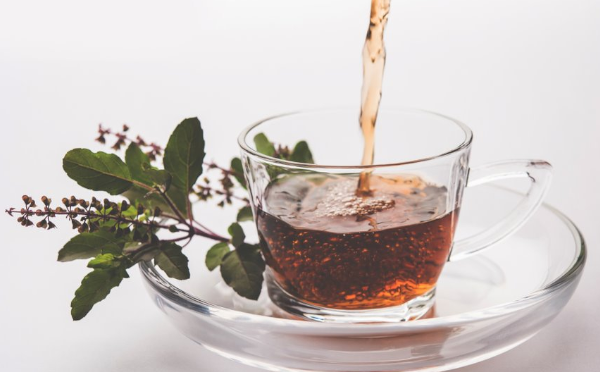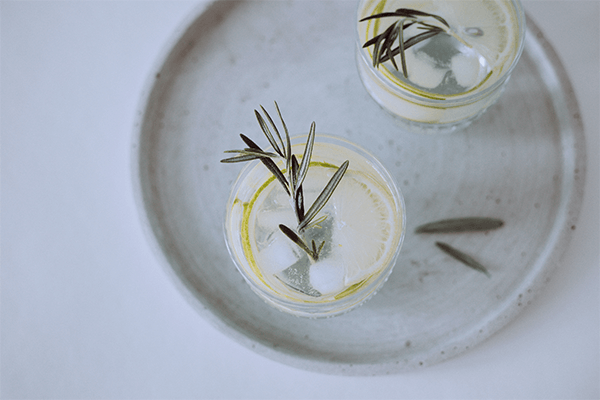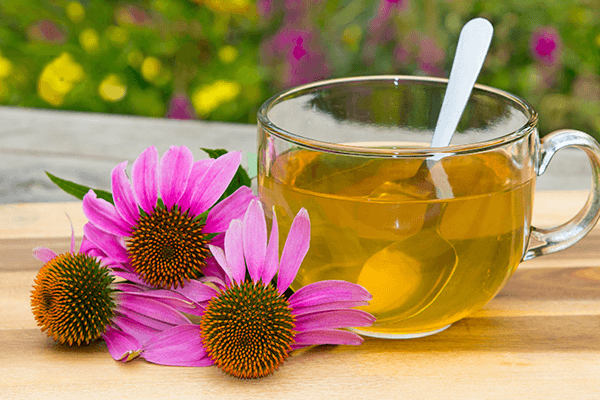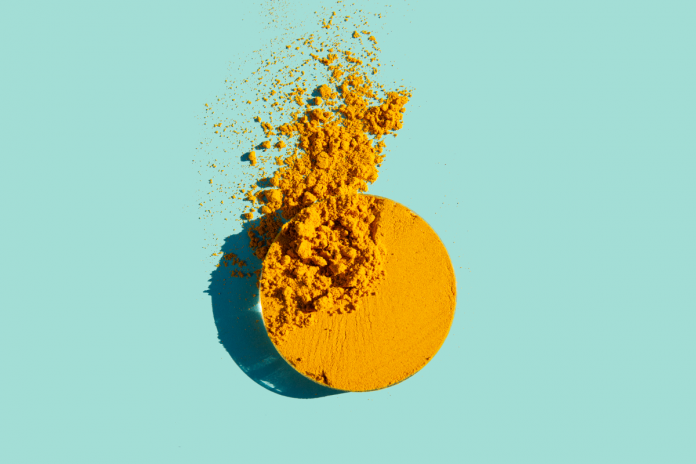Are you a tea drinker always on the lookout for new ones to try?
You may find the “Queen of Herbs” – or tulsi herbal tea – well worth trying.
It has a distinctive taste and its unique structure of chemical compounds is the base for a wide range of therapeutic agents. Plus, it’s adaptogenic, and caffeine-free!
It also represents a nutritional philosophy that is in itself a blueprint for wellness.
What is Tulsi Tea?
Tulsi, also known as holy basil, is a herb that was considered to be a sacred plant of Hindu religion and Indian Ayurvedic medicine some time before tea was introduced to Europe in the early 1600s: more than 3,000 years or so earlier, in fact.
So it has a pretty long track record of use for its purported healing properties – and it maintains a strong reputation for its contribution to health and well-being. (1)
In Ayurvedic tradition, tulsi is often referred to as an “elixir of life.” It has reigned in India for five thousand years as “the Queen of Herbs.”
It’s not quite that well-established in North America and Europe. While tulsi has been part of naturopathic medicine for some decades, a 2011 PR News Release claimed to be the first to introduce this next “superfood” tea in the US.
Today, there are a dozen or so well-regarded brands that include it in their organic, herbal and wellness products. But it’s not anywhere near as easy to spot in a store as, say, chamomile or mint teas.
That is likely to change. Tulsi tea is an ancient herbal drink well-suited to modern times.
Tulsi evolved as an integral part of living well. It became and remains embedded in Hindu religion, ceremony and culture as an element in the force for spiritual growth through this medical tradition. It’s commonplace to see a tulsi plant positioned in a Hindu courtyard and tulsi has a ceremonial role in celebrating weddings and the end of the monsoon season.
Types of Tulsi Tea
There are three varieties of the tulsi plant (Latin name for genus: Ocimum sanctum), which is native to the Indian subcontinent:
Rama Tulsi: the most common, with large green leaves and flower flowers, and the most mellow. It is found in China, Nepal and Brazil.
Krishna Tulsi: stronger in flavor and potency, with purple-tinged leaves. It is spicy with a crisp. Sharp flavor.
Vana Tulsi: a wild variety, with white flowers, found across India and also in parts of Africa. It is less spicy than the other types and has a light citrus flavor and aroma.
The three types of tulsi leaves differ in their specific phytochemical composition and secondary metabolites. Sorry for the jargon here but it’s unavoidable!
Phytochemicals are analogous to vaccines: they are chemical compounds that plants evolve to protect themselves from predators, pathogens and inhibitors of their growth.
Secondary metabolites are all the organic compounds produced by plants, fungi and bacteria that aren’t essential to normal body functioning and growth but add nutrients, protections and flavorings. They include compounds that support a plant’s defensive system.
Here’s a core difference between traditional and modern medicine. Ayurveda and Chinese practices are representative in their reliance on the interaction of compounds – the whole plant and the whole body – whereas pharmaceutical innovation has been paced by isolating individual therapeutic agents, increasingly at the molecular level. There’s a general difference in aim: staying well versus curing ills.
Potential Health Benefits of Tulsi Tea
We’ve introduced you to tulsi’s long history and tradition of therapeutic use. Now is this accumulation of knowledge something that modern science can confirm and draw on?
While the research is scattered and fragmented, with no single headline-making study, there’s an accumulation of evidence from multiple animal experiments that is supported by more limited ones that use human subjects. (2)
One difficulty in assessing the benefits of tulsi tea is that it comes in many forms – cold, hot and dry leaf, seed, root, stem, hold, extract, tincture – and there is no standardization.
It is often used as just one ingredient in a combination of plants and botanicals, whose “synergistic interactions” work together rather than any single one producing the benefit.
Still, there are three main areas in which tulsi seems to offer credible health benefits.
1. Healthy Blood Sugar Management
Tulsi is rich in eugenol, an essential oil widely used in pharmaceutical compounds. It’s been shown to support healthy levels of blood sugar, triglycerides and cholesterol. (5)
It was tested on 27 human diabetics who were not insulin-dependent, over a one-month period. Blood glucose dropped 20% and cholesterol 11%.
Another 4-week clinical trial of Type 2 diabetics reported “significant” improvements in blood pressure. Four trials found improvements in lipid profiles. Other studies confirm these patterns.
2. Help Managing Stress
Tulsi’s most distinctive claim is that it is an adaptogen. (3)
This is a term common in traditional medicine and described as “a buzzword in the wellness world” for herbs that help the body adapt to outside stresses: physical, chemical and biological.
The scientific evidence for human impacts is limited but there are plenty of animal studies that support the core idea. These apply a standard “behavioral despair” model, for example, that tests how rodents respond to the threat of drowning in a swimming test’ when do they stop struggling and just give up? This is a cruel use of animals but commonplace.
In experiments with rats and mice, swimming survival times were longer, recovery faster and response to “severe” electroshocks more energetic. Other preclinical studies showed reduction in stress-induced ulcers in rats and other effects comparable to those of drugs.
Human psychological states are obviously hard to measure and validate but there are many small-scale studies that point the same overall anti-stress and relaxant properties of tulsi.
3. Support Natural Anti-Inflammatory Response
The synergistic effects of all the essential oils and phytochemicals in tulsi seem most marked in its anti-inflammatory properties. (4)
Studies report this as very “complex”, meaning that “we just don’t know how it all works.”
Clinical studies show marked improvements in immune response from tulsi, and reduction in rawness in skin inflammation. It has been shown to be more effective in treating rheumatism and arthritis than analgesics like aspirin.
It seems to be a fairly strong anti-bacterial and anti-microbial and anti-fungal agent. The “antis” are a reminder that plant compounds evolve as protector and defenders against the many microbes, etc. in their environment.
What Does Tulsi Taste Like?
There are three main varieties of the tulsi plant, which is part of the family of aromatic herbs that includes oregano and rosemary.
It’s packed with aromatic essential oil compounds, including camphor, eugenol and eucalyptol. These contribute to its strong clove flavor with notes of mint and anise.
Generally, the teas you’ll find online will be a blend of all three of these. They are mainly sold in teabags and can have a powerful smell.
It is described by one enthusiast as “an insane mixture of cloves, lavender gardens, and burnt orange.” It’s often blended with ginger root and even rose petals.
Is Tulsi a Tea For You?
All in all, the combined evidence from 5,000 years of social, cultural and pragmatic experience – plus 50 or so years adds up to a strong case for trying tulsi tea. That is, if you can at least tolerate the often strong taste and stronger smell.
There’s such a wide range of blends and ingredient processing (dried full leaf you simply add to water, herbal mixes, and powder), that there is no equivalent of say, English Breakfast, which has many varieties but within a clear style and features.
As for the value to wellness, tulsi is a strong candidate for your exploration. The science isn’t conclusive but suggestive and extensive.






